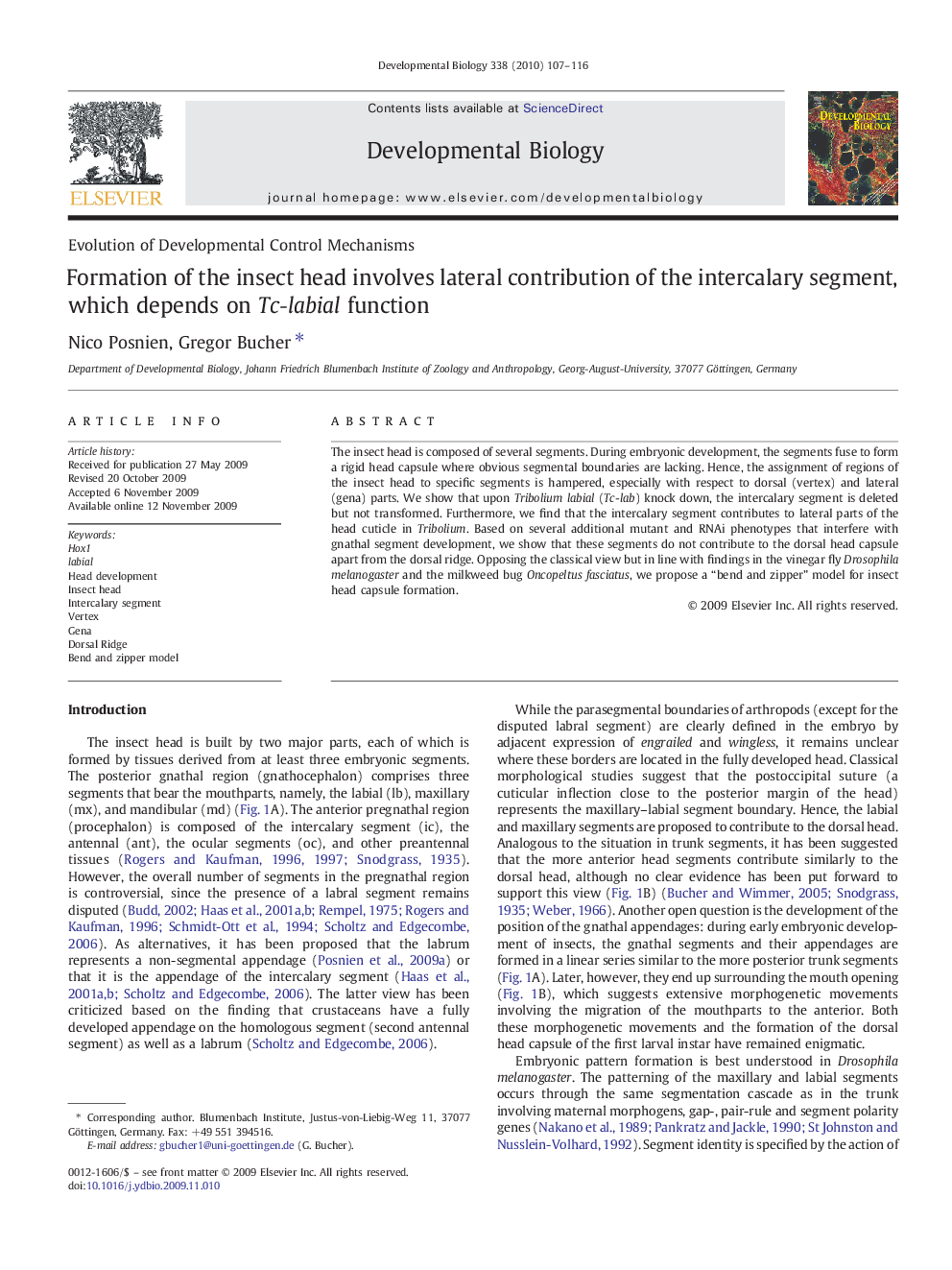| Article ID | Journal | Published Year | Pages | File Type |
|---|---|---|---|---|
| 2173988 | Developmental Biology | 2010 | 10 Pages |
The insect head is composed of several segments. During embryonic development, the segments fuse to form a rigid head capsule where obvious segmental boundaries are lacking. Hence, the assignment of regions of the insect head to specific segments is hampered, especially with respect to dorsal (vertex) and lateral (gena) parts. We show that upon Tribolium labial (Tc-lab) knock down, the intercalary segment is deleted but not transformed. Furthermore, we find that the intercalary segment contributes to lateral parts of the head cuticle in Tribolium. Based on several additional mutant and RNAi phenotypes that interfere with gnathal segment development, we show that these segments do not contribute to the dorsal head capsule apart from the dorsal ridge. Opposing the classical view but in line with findings in the vinegar fly Drosophila melanogaster and the milkweed bug Oncopeltus fasciatus, we propose a “bend and zipper” model for insect head capsule formation.
